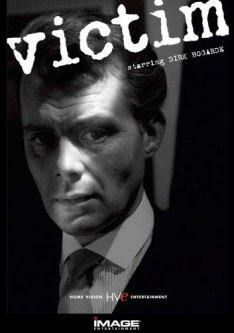
Roger Ebert's Great Movies review of Victim
Case Study: Victim by Chris Jones in Introduction to Film Studies, 4th Edition
Dirk Bogarde: Denial and daring...a star with a secret never told in The Independent (U.K.)
Victim: No Way Out by Michael Koresky (as pdf document) (as Microsoft Word Document)
Example of some of the attitudes surrounding Victim when it came out (Part 1) (Part 2)
Common Conceptions of LGBT People (timeline)
LGBT Self Perceptions (timeline)
Alfred Hitchcock's Gay? Characters
Murder! The Lady Vanishes Rebecca Rope Strangers on a Train North by Northwest Psycho In the Closet - Gay and Lesbian
Portrayals in Movies Before the Stonewall Riots (1969)
Osher Lifelong Learning
Institute Connie Hossier, Instructor
(1930)
Transvestite murderer's circus act at the end of the movie, about 1 minute long
In this early Hitchcock film from England, the murderer is a transvestite circus performer.
Although we can't assume that Hitchcock was coding a transvestite as a homosexual,
many movie goers back then probably would have conflated the two.
Compare with the final movie on this list below.
(1938)
Caldicott and Charters, the core gay scenes with the Swedish maid, about 7 minutes long
Caldicott and Charters are absolutely delightful -- probably the first positive gay couple in movie history.
There is little doubt in what Hitchcock was doing -- look at their reaction when the Swedish maid starts flirting with them.
Also, they are shown together in a very small bed, one of them without pajamas (the pajama bottoms are hanging on the wall).
Moreover, they are totally accepted as a couple by the other characters in the movie, and they act heroically at the end.
As usual, Hitchcock was having a grand time playing around with his characters and his audience.
All of the Caldicott and Charter scenes, about 17 minutes long
(1940)
All of the lingerie scene, as seen in The Celluloid Closet, about 5 minutes long
Typical of the portrayal of lesbians at the time, Mrs. Danvers is an evil, dowdy spinster. However,
Hitchcock goes beyond the simplistic stereotype and makes her into a truly creepy villain, and sneaks the lesbian
sexuality past the censors with a skill that no other director could even aspire to.
Complete Mrs. Danvers scenes, about 23 minutes long
(1948)
Murder as Orgasm, about 3 minutes long
They may not have talked about it on the set, but Hitchcock and his actors certainly knew what they were doing in these two scenes.
Turning the light on and then off, having a cigarette (after sex), all the playing around with the champagne bottle and cork, feeling "tremendously exhilarated",
and the way they talk are the codes.
(1951)
Bruno seduces Guy Haines, as seen in The Celluloid Closet, plus Bruno with his mother, and fight at end, about 4 minutes long total
Most current Hitchcock commentators accept Bruno as a coded gay character.
He "seduces" Guy Haines at the beginning of the movie. Also, Bruno is overly attached to his mother (Freud),
and wears an extravagant house robe (Oscar Wilde) -- both cues for "homosexual". Some commentators
even see the brief scene at the end when Bruno and Guy are fighting on top of each other on the carousel as a code for gay sex.
(1959)
The two possible gay references about Leonard in the house scene, about 1 1/2 minute long
The evidence that Leonard is gay is very slight, but still significant because Hitchcock was
always aware of the implications and subtleties in his movies. Leonard mentions his "woman's intuition", and then
the James Mason character says that Leonard is "jealous", something he finds delightful.
Both references are in the clip above. All the scenes with Leonard are contained in the clip below, without any
other specific indications that he is gay.
All of the scenes with Leonard, about 27 minutes long
(1960)
Norman Bates as his mother, about 1 minute
Another killer transvestite. It's doubtful that Hitchcock was coding Norman Bates as
homosexual. He is probably just your run-of-the-mill Hitchcockian psycho.
University of Illinois, Urbana-Champaign
Scott Badman,
Instructor